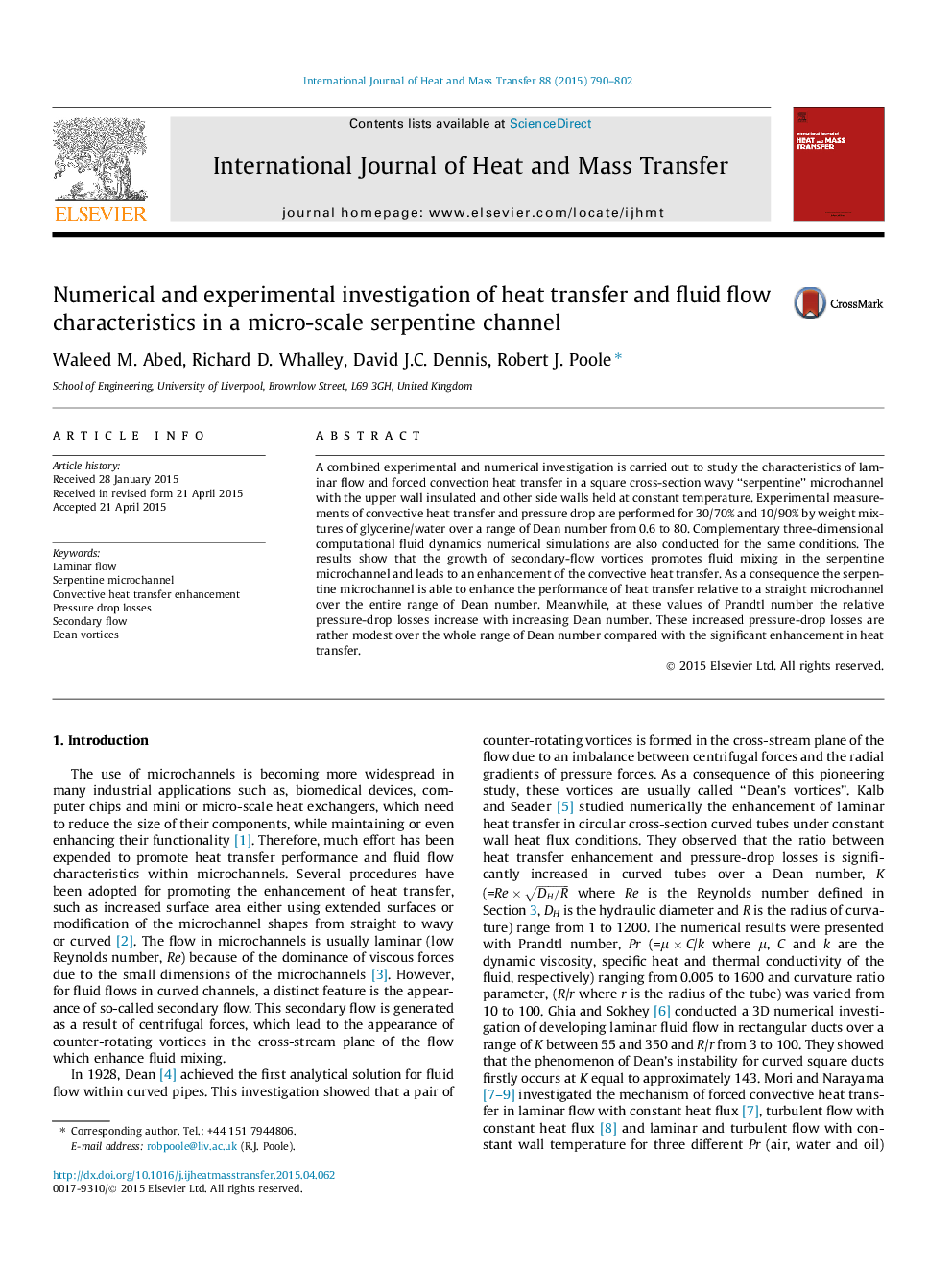| Article ID | Journal | Published Year | Pages | File Type |
|---|---|---|---|---|
| 657069 | International Journal of Heat and Mass Transfer | 2015 | 13 Pages |
Abstract
A combined experimental and numerical investigation is carried out to study the characteristics of laminar flow and forced convection heat transfer in a square cross-section wavy “serpentine” microchannel with the upper wall insulated and other side walls held at constant temperature. Experimental measurements of convective heat transfer and pressure drop are performed for 30/70% and 10/90% by weight mixtures of glycerine/water over a range of Dean number from 0.6 to 80. Complementary three-dimensional computational fluid dynamics numerical simulations are also conducted for the same conditions. The results show that the growth of secondary-flow vortices promotes fluid mixing in the serpentine microchannel and leads to an enhancement of the convective heat transfer. As a consequence the serpentine microchannel is able to enhance the performance of heat transfer relative to a straight microchannel over the entire range of Dean number. Meanwhile, at these values of Prandtl number the relative pressure-drop losses increase with increasing Dean number. These increased pressure-drop losses are rather modest over the whole range of Dean number compared with the significant enhancement in heat transfer.
Keywords
Related Topics
Physical Sciences and Engineering
Chemical Engineering
Fluid Flow and Transfer Processes
Authors
Waleed M. Abed, Richard D. Whalley, David J.C. Dennis, Robert J. Poole,
